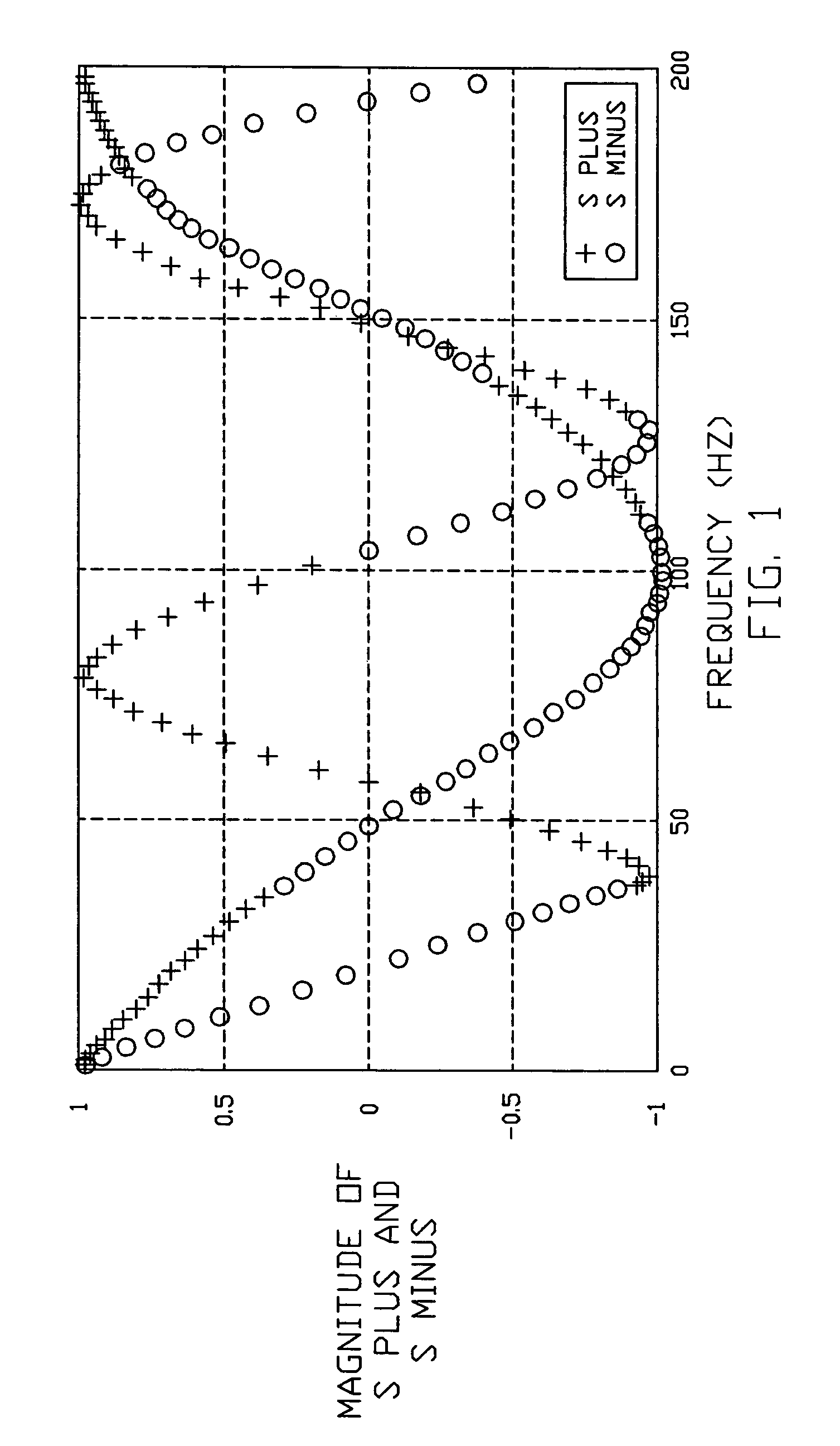Inverse method for estimating the wave propagation parameters of two dissimilar wave types
a wave propagation parameter and wave propagation field technology, applied in the direction of mechanical roughness/irregularity measurement, instruments, specific gravity measurement, etc., can solve the problems of inability to accurately analyze dual wave propagation, and inability to use resonant techniques to only allow measurements at natural frequencies
- Summary
- Abstract
- Description
- Claims
- Application Information
AI Technical Summary
Benefits of technology
Problems solved by technology
Method used
Image
Examples
Embodiment Construction
[0039]The present invention provides a method to separate and measure the characteristics of two dissimilar waves propagating in a finite or infinite media. This method is particularly useful in steady state measurement processes where both waves are “blended” together in the measurement data. Additionally, it is applicable to structures with finite spatial lengths whose boundaries produce reflected wave energy that is difficult to model. A typical system is a structure that supports a longitudinal and a shear wave traveling in both directions across its media. The present invention provides the ability to separate two different waves and measure their corresponding wavenumbers and wavespeeds on a finite or infinite media. As well, the present invention provides the ability to measure propagation coefficients for each wave. Additionally, all measurements can be calculated at every frequency that a transfer function measurement is made. They do not depend on system resonant frequenci...
PUM
 Login to View More
Login to View More Abstract
Description
Claims
Application Information
 Login to View More
Login to View More - R&D
- Intellectual Property
- Life Sciences
- Materials
- Tech Scout
- Unparalleled Data Quality
- Higher Quality Content
- 60% Fewer Hallucinations
Browse by: Latest US Patents, China's latest patents, Technical Efficacy Thesaurus, Application Domain, Technology Topic, Popular Technical Reports.
© 2025 PatSnap. All rights reserved.Legal|Privacy policy|Modern Slavery Act Transparency Statement|Sitemap|About US| Contact US: help@patsnap.com



